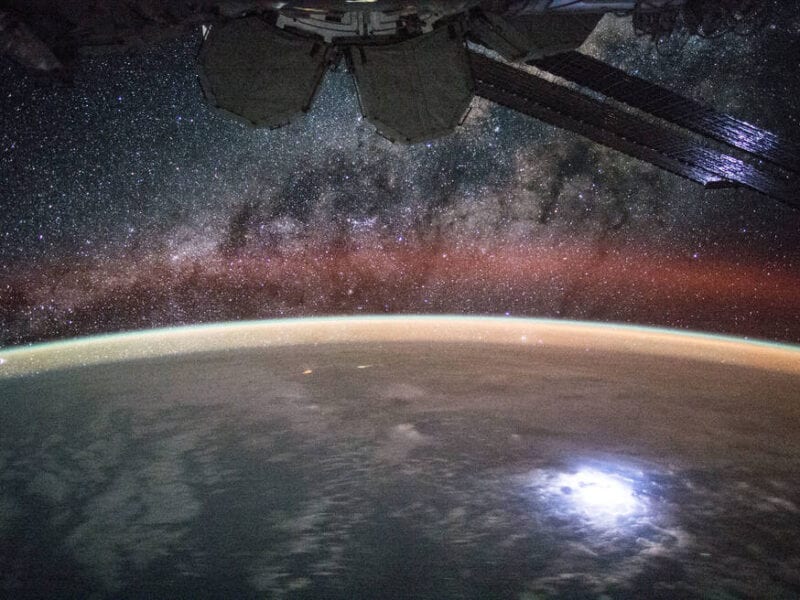Space Dynamics Lab Completes Milestone for NASA Space Weather Mission

An image taken from the International Space Station shows orange swaths of airglow hovering in Earth’s atmosphere. NASA’s new Atmospheric Waves Experiment will observe this airglow from a perch on the space station to help scientists understand, and ultimately improve forecasts of, space weather changes in the upper atmosphere. Photo: NASA
Utah State University’s Space Dynamics Laboratory (SDL) revealed Wednesday that it has successfully completed the Key Decision Point (KDP) C for NASA’s Atmospheric Waves Experiment (AWE). KDP-C provides NASA approval for the project to begin final design and fabrication, known as Phase C, and establishes baselines for its official schedule and budget.
This AWE mission is planned to launch to the International Space Station (ISS) in 2022. AWE is part of NASA’s Explorers Program under the Goddard Space Flight Center Explorers and Heliophysics Projects Division, and is led by Principal Investigator Dr. Michael J. Taylor at Utah State University. The Space Dynamics Laboratory will build the AWE instrument and is also providing project management, systems engineering, safety and mission assurance, and mission operations.
“The approval of AWE’s path forward follows a rigorous review of all technical and programmatic aspects of the project and is a critical step as we begin fabricating and testing the instrument,” said Burt Lamborn, AWE project manager at SDL. “Under the leadership of NASA and Dr. Taylor, SDL is excited to execute this mission, which will provide crucial information about how terrestrial weather affects space weather.”